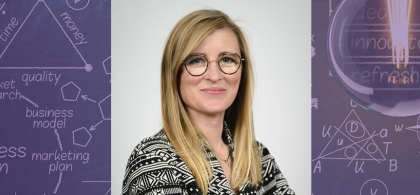
Everyone has their own pace: how can you promote slow tourism?
Taking time out to enjoy life while you’re on holiday – that’s the aim of slow tourism. With the demand for “decelerated” travel on the rise since the Covid pandemic, how can we promote on-target packages? What levers can be used to attract tourists? Aikaterini Manthiou and Volker Kuppelwieser have explored these very questions, and have come up with suggestions for targeted marketing offers.
More sustainable and more down-to-earth: slow tourism’s inherent values have seen it grow at breakneck speed, even outstripping its close relations ecotourism and responsible tourism. Its success has been built on the back of the Covid-19 pandemic; the search for meaning; and the need to put the brakes on the frenzied pace of day-to-day life. The key question looking forward is almost an oxymoron: how can we inject life into slow tourism across the French regions?
It’s an issue that France – the world’s number-one holiday destination – is making a point of tackling, and not simply for its economic potential but also for the “green” image it conveys. As a result, in early 2022 the French government funded 73 slow tourism projects as part of the “France Relance” stimulus package. But what do we mean exactly by this type of travel? The key characteristics of slow tourism, which is often presented as an alternative to mass tourism, are its slow but steady rhythm, its rate of consumption, its environmental impact and its values. High-speed, polluting modes of transport are a thing of the past alongside whistle-stop tours and excess consumption. Nowadays it’s about getting away from it all, being flexible, and consuming locally. The sector has to come up with new offers to help it stand out from the competition. To meet this goal, we need to understand how devotees of slow tourism perceive the way they travel. Most importantly, we need to know what influence this may have on marketing offers devoted to this new consumption pattern.
Tools for attracting travellers
The challenge for tourism service providers is to come up with packages that aim to answer the following question positively: “Will you go on holiday with us again?” The two NEOMA researchers, both of whom are marketing specialists, focused on how travellers perceive the pace of their holiday and the emotional response it produces, which can then be used to predict their future consumption behaviour. Various sample groups of American tourists were interviewed about their previous trips. The results show that the pace (slow or fast) of the holiday is key to the visitor experience, but that the perceptions tourists have about their consumption patterns (whether they are sustainable or not) are broadly similar. In each case, the travellers attach importance to the positive feelings generated by their trip.
The researchers recommend that marketing managers exploit the virtuous aspects of slow tourism. In other words: build not just on the feeling that consumers will appreciate their trip but also the feeling that it will benefit society, since (for instance) it causes less pollution. These ethical aspects make it more probable that travellers will make a return visit. The researchers came to the same conclusion regarding the value of the experience if the consumer assesses a posteriori that the trip was worth the money. These feelings have an impact on the level of satisfaction, the recommendations travellers make after their trip and the likelihood of purchasing a similar offer in the future. In more general terms, the study advocates spotlighting positive feelings and well-being, concentrating on the down-to-earth, honest and “pure” characteristics of slow tourism.
Is the environment a limiting factor?
This study departs from earlier research, which found that travellers thought that sustainable products, including slow tourism, were more ethical than mass tourism. The NEOMA researchers show that the experience is the most important factor, regardless of the form the offer takes. But does the fact that “decelerated tourism” is associated with a smaller ecological impact influence the probability of purchasing a slow tourism offer in the future? The answer is yes. And, paradoxically, tourists with low environmental concerns are most ready, willing and able to try the experience again. Why? Because the environmental impact, even though it is lower, is a constraint for more committed travellers who prefer to limit the number of trips they make. The study found that the ecological dimension is nevertheless an important criterion to be leveraged, and to distinguish slow tourism from other offers.
In addition, tourism is still an activity that is impacted by the culture. This research, which was carried out among American tourists, should be extended to other groups. Last but not least, there is a huge variety of ways of travelling, including a more balanced version that combines the values of fast and slow tourism. How can these groups be targeted? What kind of content should be pushed to promote slow tourism packages? These are all questions that are yet to be explored.
Find out more
A. Manthiou, V. Kuppelwieser. Consumer reaction to decelerated tourism: pace, inherent virtue, and environmental concern. Journal of Travel Research (2022), 1-20. https://doi.org/10.1177/00472875221130293
Further reading
- Aikaterini Manthiou, Phil Klaus, Van Ha Luong. Slow tourism: Conceptualization and interpretation – A travel vloggers’ perspective – Tourism Management, Volume 93, 2022, https://doi.org/10.1016/j.tourman.2022.104570.
- A. Manthiou, I. Ulrich, V. Kuppelwieser, The travel influencer construct: An empirical exploration and validation, Tourism Management, 2024, https://doi.org/10.1016/j.tourman.2023.104858



